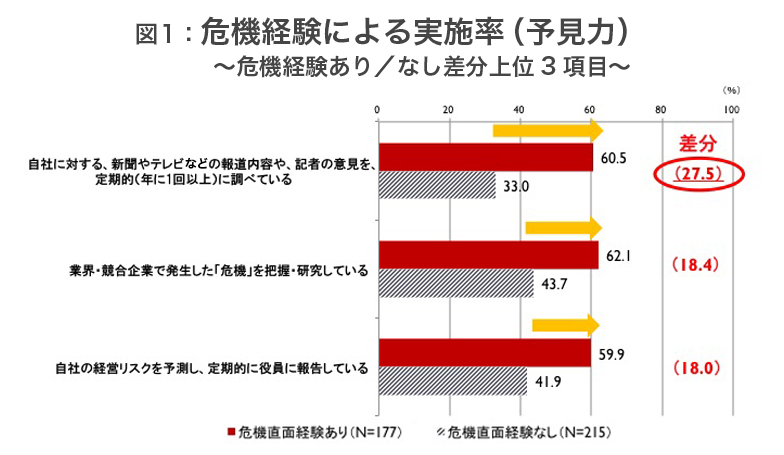For instance, events like volcanic eruptions or earthquakes can cause unprecedented, massive damage. However, societal criticism often centers on whether the disaster and damage were truly "unforeseeable." The focus is on predictability and preparedness.
Human-induced crises fall into two categories: those caused by intentional actions like criminal acts or sabotage, and those resulting from accidental occurrences. However, crisis management scholar Ivan Mitrov, then Chair Professor at the Marshall School of Business, University of Southern California, points out that even accidents can face severe scrutiny if they are human-induced and preventable (Note 1).
Certainly, damage caused by natural disasters like earthquakes, floods, or typhoons is often unavoidable, and no one can be blamed for such events. However, when human factors contribute to a crisis and damage occurs due to events that could have been foreseen or predicted—such as the escalation of damage caused by delayed responses—this constitutes a man-made crisis.
To prevent crises before they occur, it is crucial to take actions for "crisis avoidance" and "damage mitigation": anticipating the precursors of accidents or incidents in advance, implementing various countermeasures, and enhancing the capacity to absorb damage.
Predictable Crises Arising from Three Shortfalls: Recognition, Attention, and Response
According to Michael D. Watkins, Associate Professor at Harvard Business School (at the time), and Max H. Bazerman, Professor at Harvard Business School, "foreseeable crises" arise from "insufficient recognition," "insufficient attention," and "insufficient response" (Note 2).
"Lack of awareness" occurs when an organization's top leadership is so unfocused that they fail to notice an impending crisis or problem in the first place. The second, "lack of attention," happens when top leadership notices the crisis but decides there's no need to panic now and fails to give it serious consideration. The third, "lack of response," occurs when top leadership notices the impending problem and pays some attention to it, yet fails to respond effectively.
Even if just one of these three elements is lacking, the crisis is considered "foreseeable," and the top leadership will be held accountable. In other words, it is no exaggeration to say that the decisive factor in crisis management is "foresight."
Companies facing crises analyze "how they are perceived by society"
At the Corporate Public Relations Strategy Institute, we define "foresight" as "the ability to foresee 'crises' that could potentially impact the company in the future and to share this foresight systematically throughout the organization." For example, this involves analyzing "crises" occurring in the industry or among competitors, estimating the potential impact (financial, social, etc.) on the company if a similar "crisis" were to occur, and creating predictive reports on the company's management risks to be regularly reported to executives.
Results from our earlier "Corporate Crisis Management Survey" show that the "foresight capability" score (38 points out of 100) is low, indicating few companies currently prioritize strengthening this capability. Without the ability to "foresee," actions like "avoidance" and "damage mitigation" become haphazard. Therefore, enhancing "foresight capability" is a top priority for companies seeking to improve their crisis management strength.
We analyzed questions related to "foresight" separately for companies with crisis experience and those without. The largest difference between the two groups was in the statement: "We regularly (at least once a year) monitor news reports about our company in newspapers, TV, and other media, as well as journalists' opinions." Companies that have experienced crises pay attention to "how society views them," incorporating external perspectives to anticipate crises and implement countermeasures.
When anticipating crises, it is essential to focus not only on internal company values but also to pay close attention to the rapidly changing social environment and what could lead to crises. Surprisingly, many cases exist where issues deemed acceptable internally can lead to crises. Internal organizational culture and values alone may not detect them.
To Enhance "Anticipatory Capability"
So, what specific actions can be taken to enhance foresight? It begins with collecting and analyzing diverse information about the company from both internal and external sources. Acquiring external information is also crucial. The following are key methods for enhancing "foresight," which can serve as a reference:
・Risk Assessment (Employee Surveys/Interviews, etc.)
Gain a more accurate understanding of the risks your company faces.
・Stakeholder surveys / Consumer monitoring / Group interviews
Conduct surveys with external stakeholders to identify issues concerning your company.
・Public Opinion Surveys (Quantitative/Qualitative)
Identify risks hidden in gaps with public opinion.
・Collection of Other Companies' Case Studies (Gathering Information on Similar Incidents/Accidents)
Collect information on risk incidents occurring at other companies to serve as verification material for our own crisis management.
・Media Coverage Analysis & Media Briefings (Company, Competitors, Benchmarks)
Monitor media sentiment and analyze your company's current position through competitor comparisons and other analyses.
・Reputation Monitoring (Social Listening)
Monitor online and social media sentiment to identify issues early and develop countermeasures.
・Evaluation of Specific Issues byExternal Opinions (e.g., Journalists, Lawyers, University Professors, Experts)
We gather information on the industry landscape, domestic social trends, and international social trends to create reports that extract and organize events indicating potential crisis signs.
and organize them into a report.
(References)
Note 1: Mitroff, I. I. with Anagnos, G. (2001), MANAGING CRISES BEFORE THEY HAPPEN: What Every Executive and Manager Needs to Know About Crisis Management, AMACOM, translated by Masa-Yasu Ueno and Isao Onuki (2001), Crisis Management in an Age of Unavoidable Crises, Tokuma Shoten)
Note 2: Watkins, M.D. & Bazerman, M.H. (2003), Predictable Surprise: The Disasters you should have seen coming, Harvard Business Review, translated by Naohisa Nishi (2003) Predictable Business Crises, Diamond Harvard Business Review, Diamond Inc., pp.64-75)


